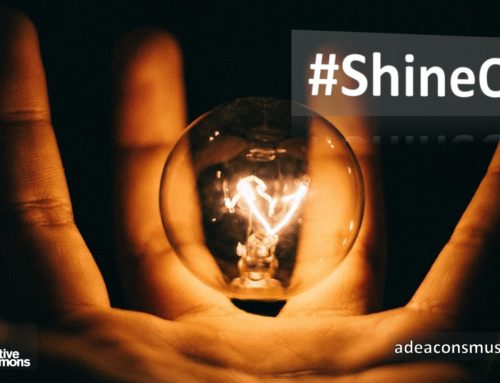We live in a phenomenally vibrant, exciting, and emergent time in which change, technology and uncertainty dance an intimate movement. And this party shows no choreographed pattern of ending anytime soon. In this place, some of us thrive, some of us doubt and challenge, and some of us are anxious and threatened. None of these – on their own – are (in fact) bad things. Actually, likely a healthy balance of both/and is a useful response.
The challenge, however, is that there has been and is an evolving progression – in some quarters and areas – that seeks to simplify, minimise or detract this reality with binaries: right or wrong, us vs. them, black and white. I am suspicious this is not a healthy way toward balance: once you choose one, you find it necessary to lay traps, in order to draw a line in the sand over which the other may not pass.
As I write this blog, I find myself smack in the middle of this crazy paradox in the Christian calendar called Easter: it’s miracle time for half the world’s population and the trap is that people of faith are often implicitly (sometimes explicitly) challenged to choose: faith or science: proof or intuition; experience or a study. It’s all a bit nutty and … somewhat worrisome.
I have never seen science’s – one aspect of our human adventure by reason – exploration of the physical world with a rigorous methodology as existing in conflict with my faith. As with most of our pursuits – individually or collectively – it’s always in a state of refinement and subject to our own ‘stuff’ getting in the way. This way of answering questions, however, has provided us with technology, tools, insight and understanding that look a lot like miracles to history.
Faith – as that sense of something larger, binding and weaving everything together – when grounded in confidence (but not ego) is releasing and freeing. It can – in such places of liberation – shift an intellectual definition of miracles to actually perceivable and tangible events in our lives.
C.S. Lewis has claimed that “Miracles do not, in fact, break the laws of nature.” He continues in the book Miracles: “In Science we have been reading only the notes to a poem; in Christianity we find the poem itself.”
As a Christian who also has an affinity for science, I admit I can feel the pull of our culture of having to choose: I will always be loath to make an either/or choice. As such, I admit to not seeing a tension, paradox perhaps, but not a binary. It’s certainly also somewhat exciting to know that paradox and chaos find good company in our scientific pursuits.
Jesus – great teacher and Rabbi, justice seeker and prophet – was a lot of things in the mortal coil called life. But we’ve had lots of those and thank goodness we’re likely to have more. But there’s that Resurrection miracle thing – ask me to explain it and … well all I know is that with our current understanding of the (meta-) physical and quantum world, it’s certainly possible … just not probable. Ask me to get into the nitty-gritty of the debate and … I likely won’t. Faith emboldens me into conversations that awaken wonder mutually. Debates are binaries that lead to traps for one another.
So as I take a step into this season in which bunnies and chocolate abound, I’ll certainly look into the morning mirror. As I walk into the day, passing through my neighbourhood, I’ll look at the people, who are sometimes smiling, frowning, crying or laughing in my community. And, as I pull the office door open, I’ll be certain to remind myself … I’ve seen nothing but miracles since my day began …








Your reflections are most welcome!